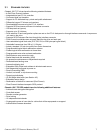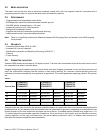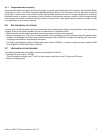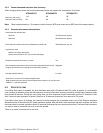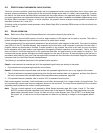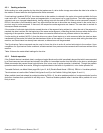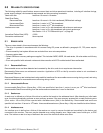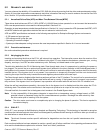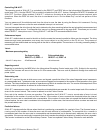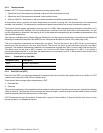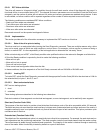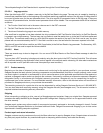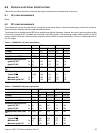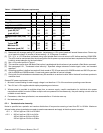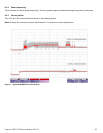CHEETAH 15K.7 FC PRODUCT MANUAL, REV. E 15
5.2 RELIABILITY AND SERVICE
You can enhance the reliability of Constellation ES.3 SAS disk drives by ensuring that the drive receives adequate cooling.
Section 6.0 provides temperature measurements and other information that may be used to enhance the service life of the
drive. Section 10.2 provides recommended air-flow information.
5.2.1 Annualized Failure Rate (AFR) and Mean Time Between Failures (MTBF)
These drives shall achieve an AFR of 0.55% (MTBF of 1,600,000 hours) when operated in an environment that ensures the
HDA case temperatures do not exceed the values specified in Section 6.4.1.
Operation at case temperatures outside the specifications in Section 6.4.1 may increase the AFR (decrease the MTBF). AFR
and MTBF statistics are poplulation statistics that are not relevant to individual units.
AFR and MTBF specifications are based on the following assumptions for Enterprise Storage System environments:
• 8,760 power-on hours per year
• 250 average on/off cycles per year
• Operating at nominal voltages
• System provides adequate cooling to ensure the case temperatures specified in Section 6.4.1 are not exceeded.
5.2.2 Preventive maintenance
No routine scheduled preventive maintenance is required.
5.2.3 Hot plugging the drive
Inserting and removing the drive on the FC-AL will interrupt loop operation. The interruption occurs when the receiver of the
next device in the loop must synchronize to a different input signal. FC error detection mechanisms, character sync, running
disparity, word sync, and CRC are able to detect any error. Recovery is initiated based on the type of error.
The disk drive defaults to the FC-AL Monitoring state, Pass-through state, when it is powered-on by switching the power or
hot plugged. The control line to an optional port bypass circuit (external to the drive), defaults to the Enable Bypass state. If
the bypass circuit is present, the next device in the loop will continue to receive the output of the previous device to the newly
inserted device. If the bypass circuit is not present, loop operation is temporarily disrupted until the next device starts
receiving the output from the newly inserted device and regains synchronization to the new input.
The Pass-through state is disabled while the drive performs self test of the FC interface. The control line for an external port
bypass circuit remains in the Enable Bypass state while self test is running. If the bypass circuit is present, loop operation
may continue. If the bypass circuit is not present, loop operation will be halted while the self test of the FC interface runs.
When the self test completes successfully, the control line to the bypass circuit is disabled and the drive enters the FC-AL
Initializing state. The receiver on the next device in the loop must synchronize to output of the newly inserted drive.
If the self-test fails, the control line to the bypass circuit remains in the Enable Bypass state.
Note. It is the responsibility of the systems integrator to assure that no temperature, energy, voltage hazard, or ESD
potential hazard is presented during the hot connect/disconnect operation. Discharge the static electricity from
the drive carrier prior to inserting it into the system.
Caution. The drive motor must come to a complete stop prior to changing the plane of operation. This time is required to
insure data integrity.
5.2.4 S.M.A.R.T.
S.M.A.R.T. is an acronym for Self-Monitoring Analysis and Reporting Technology. This technology is intended to recognize
conditions that indicate imminent drive failure and is designed to provide sufficient warning of a failure to allow you to back up
the data before an actual failure occurs.
Note. The drive’s firmware monitors specific attributes for degradation over time but can’t predict instantaneous drive
failures.
Each monitored attribute has been selected to monitor a specific set of failure conditions in the operating performance of the
drive and the thresholds are optimized to minimize “false” and “failed” predictions.



